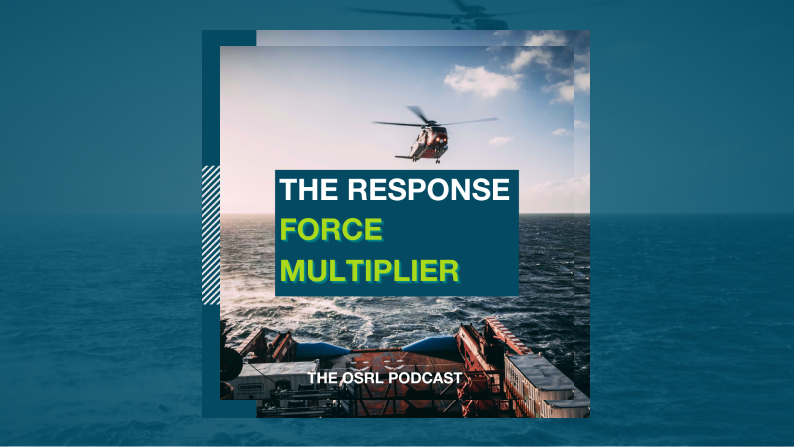Are Women Better Leaders in a Crisis?
Gender plays a significant role in a leader's approach but does that mean that one gender is better at leading in a crisis?
One year into the COVID-19 pandemic and the subject of effective leadership – and the value of empathy – have been thrust back into the spotlight on a global scale.
It can be debated whether gender plays a significant role in defining a leader’s approach, with different experiences and competencies, but regardless, does that mean that one gender is fundamentally better at leading in a crisis over the other?
In December 2020, the Harvard Business Review made its position clear, publishing an article titled ‘Women are better leaders during a crisis’ by Jack Zenger and Joseph Folkman. The authors highlight that based on their data, leaders need to be able to pivot and learn new skills; emphasize employee development even when times are tough; display honesty and integrity; and are sensitive and understanding of the stress, anxiety, and frustration that people are feeling. Their analysis showed that these are traits that are more often displayed by women. It is an interesting read, and I’ve shared my thoughts on this theme a few times throughout the year. Some colleagues and I also covered this topic during our OSRL ‘pandemic musings’ podcast series, where I recognised the strong leadership of New Zealand’s PM, Jacinda Ardern.
Chromosomes or Competencies?
Back in 2014, Forbes published an article about ‘the end of the Macho leader’. It explores the views of over 6,500 consumers (source: KLCM 2014) and identified feminine leadership as the way of the future.
According to Forbes, these traits include: ‘leading by example,’ ‘communicating openly and transparently,’ ‘admitting mistakes,’ ‘bringing out the best in others,’ and most notably during a global pandemic, ‘handling controversial issues calmly and confidently.’ In their research, female leaders performed better than their male counterparts in all but one of these areas.
The Harvard Business Review research mentioned earlier looked at 19 competencies and identified the five where there was a statistically significant difference between women and men. These areas included ‘takes initiative,’ ’learning agility,’ ‘inspires and motivates others,’ ‘develops others,’ and ‘builds relationships.’ In total, women were rated more positively on 13 of the 19 competencies that comprise overall leadership effectiveness. Men were rated more positively on just one competency, ‘technical/professional expertise’, but the difference was not statistically significant.


Expectations in a crisis
With the world now in a digital/highly connected age, the expectations of leaders and our collective judgement of their performance is discussed openly and publicly. A single comment can gain momentum quickly online, twisting the narrative and taking on a life of its own. Increasing polarisation has also put leaders in positions where they can evoke highly-emotional reactions or even outrage, as demonstrated during the riots at US Capitol building in early January. Leaders in the public sphere and across all organisations, therefore, need to exhibit the right leadership effectiveness traits if they want to perform well, especially as shortcomings will be magnified during a crisis.
The way a leader acts during a crisis reinforces their credentials as a good leader or a bad one. The first part of a crisis is typically reactive in nature, requiring leaders to act quickly, make decisions and build trust, but it can leave leaders open to criticism if they rush to judgement. As you move into the subsequent stages of a crisis, the response becomes more focused on balancing those judgements and trade-offs with the information available. The difference between an effective and an ineffectual leader is that a successful leader will provide direction, drive collaboration and inspire others to give their best, which is precisely what you need to navigate a crisis successfully.
Situational Leadership
When you are in a crisis, you typically need a directive leadership style because time is short, information flow is high and rapid decision making is required. Women tend to exhibit more collaborative or participative and democratic styles of leadership; whereas men more often use a command-and-control approach. Both approaches have their merits, but women more frequently blend the two and exhibit a highly effective, androgynous leadership style, often described as ‘transformational leadership’.
Countries with women in leadership suffered six times fewer confirmed deaths in the first wave of Covid-19 than countries with governments led by men (source: Will the Pandemic Reshape Notions of Female Leadership?). Female leaders such as Finland’s Sanna Marin have been praised for meeting the crisis with scientific backing, efficiency and compassion. Angela Merkel was admired for her data-driven trustworthiness, Jacinda Ardern was respected for her empathetic rationality. The 2008 financial crisis saw Iceland fare better than others in the economic downturn thanks to the female leadership which brought the country out of financial collapse and ultimately ushered the country to economic growth. There aren’t many global female leaders, but those we do have performed well so far and should be recognised.
Critical competencies in a crisis
During a crisis, a leader should stand back, take an overview and delegate, communicate vision and priorities to team members, promote team spirit and information sharing, consider long-term resource requirements, and challenge assumptions. These attributes could be distilled down into four behaviours leaders need to cultivate in themselves and their teams:
- must decide with speed over precision
- adapt boldly,
- reliably deliver, and
- engage for impact.
Being decisive and adaptable, and making quick decisions, is essential for good leadership during a crisis – sometimes without all of the information or facts at hand. Any decisions made will also need to be measured and based on calculated decisions for the best course of action. Women tend to have a greater sensitivity to risk, which shapes decision-making in ways that drive different outcomes compared to when men are making the decisions.
When you think about our own, individual response to COVID-19, we are all mindful of the various risks to our own health, as well as our families and the wider public. Each of us has made decisions based on the level of risk we are prepared to take. Some of us jumped at the chance to dine indoors at restaurants last summer; others couldn’t comprehend the risk/reward equation and remained at home. I am not suggesting that these decisions fell neatly down gender lines, but research has shown that men tend to increase risk-taking under stress, while women decrease risk-taking in similar situations, with evidence suggesting that this can improve decision-making performance.
Suppose a risk-averse style is preferable in a crisis. In that case, this can be achieved by adopting the go hard/get big quick approach or the ‘prudent overreaction’ that we typically advocate at OSRL – a methodology that can always be scaled back if not required. Take Perth in Australia, for example. It implemented a five-day lockdown for two million people when one person tested positive for COVID-19 outside of a quarantine hotel (source: CNN - Single case...).
The importance of communication
Messaging and leadership go hand in hand during a crisis – when effective, the right messaging drives trust and cooperation and can make leading easier. It must be consistent, not sugar-coated and delivered with a sense of purpose. It is about remaining calm and in control despite the chaos. In her time as Prime Minister for New Zealand, Jacinda Ardern has had several crises to manage – including a terrorist shooting, an earthquake and a global pandemic – but her messaging has shown those key leadership traits - compassion for the victims, empathy and trust. Specifically, for the shooting that occurred in March 2019, her message spoke of the hate-filled ideology that had triggered the shooting, while simultaneously reaffirming New Zealand’s values as an open and tolerant country, and underlining the additional security measures put in place to prevent another tragedy. She went on to change the country’s gun laws and received widespread praise across the globe for her efforts.
Every crisis is different and often unpredictable, and leaders need to manage unusual circumstances and their consequences as they occur. When the Macondo oil spill happened in the Gulf of Mexico, 11 people lost their lives in one of the worst industrial accidents of the era. In a truly tone-deaf moment, the platform operator’s then CEO remarked about ‘wanting his life back’ amidst the media frenzy surrounding the event. In that instant, he managed to massively damage his organisation’s credibility and his own leadership authority, ultimately leading to his departure and increased negative sentiment towards his employer. Honesty and confidence must be projected but empathy is just as crucial to a leader’s overall effectiveness. Overstating or understating the magnitude of a situation will not help in the slightest. In fact, it might actually impact the recovery process. So, having a spokesperson with the requisite competencies at the helm is essential in a crisis with so many moving parts.
Unconscious Bias in Leadership
It is factual to say there is an imbalance in the number of women leaders in politics, business, government, and education. The same goes for other types of diversity that are essential to thrive in today’s world. Unconscious bias may have implications for women’s leadership development, but the first step is to be aware of the biases that exist and how they manifest within an organisation. This then leads into the question, should there be male-only and female-only leadership development programmes?
Surely there is a benefit to learning from the opposite gender, but at the same time women in mixed-gender training have been shown to not feel comfortable sharing concerns unique to them, and research demonstrates that women’s leadership programmes can and should be guided by theory and research.
It’s not gender, its education
In the end, exemplary leadership in a crisis comes down to essential attributes, traits or competencies that any sex can develop to improve their leadership performance. Women may naturally have developed more of the soft skills that lead to effective leadership in today’s society. However, ultimately, it comes down to individual and team performance, and we all need to hold ourselves accountable for that, regardless of our biology.
No organisation is immune to a crisis - are you ready?
Ensure you have an effective Crisis Management Team and functional crisis preparedness system in place with our Crisis Preparedness Services.





